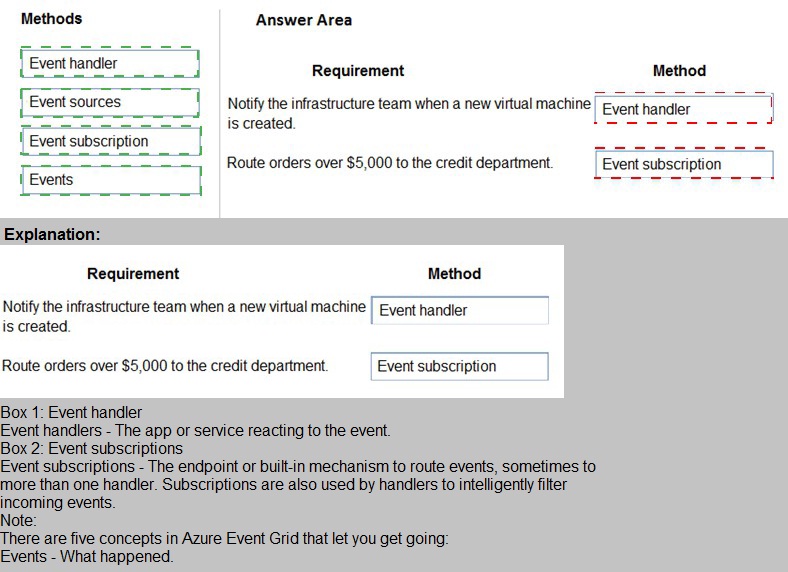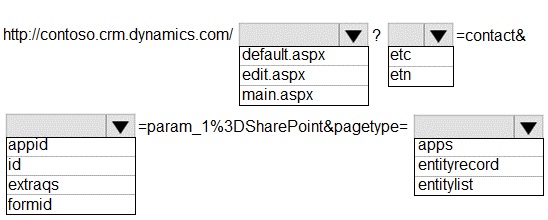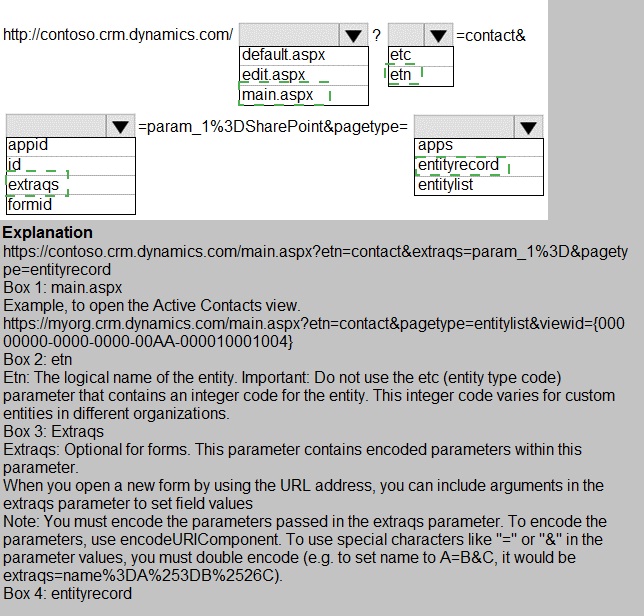
- Email support@dumps4free.com

Topic 1: Bellows Sports
Case study
This is a case study. Case studies are not timed separately. You can use as much
exam time as you would like to complete each case. However, there may be additional
case studies and sections on this exam. You must manage your time to ensure that you
are able to complete all questions included on this exam in the time provided.
To answer the questions included in a case study, you will need to reference information
that is provided in the case study. Case studies might contain exhibits and other resources
that provide more information about the scenario that is described in the case study. Each
question is independent of the other questions in this case study.
At the end of this case study, a review screen will appear. This screen allows you to review
your answers and to make changes before you move to the next section of the exam. After
you begin a new section, you cannot return to this section.
To start the case study
To display the first question in this case study, click the Next button. Use the buttons in the
left pane to explore the content of the case study before you answer the questions. Clicking
these buttons displays information such as business requirements, existing environment,
and problem statements. If the case study has an All Information tab, note that the
information displayed is identical to the information displayed on the subsequent tabs.
When you are ready to answer a question, click the Question button to return to the
question.
Background
Bellows Sports is the region’s newest, largest, and most complete sports complex. The
company features baseball and soccer fields and two full-size hockey rinks. The complex
provides coaching, recreational leagues, a pro shop, and state-of-the art customer and
player amenities.
The company is organized into the following divisions:
Baseball
Hockey
Soccer
Bellow Sports runs tournaments several times per year. Each tournament runs six weeks.
Current environment
Requirements
Bellow Sports tracks players and events in Microsoft Excel workbooks and uses email to
communicate with players, partners, and prospective customers. The company uses a
proprietary cloud-based accounting system.
The company relies on referrals from athletes for new business. Bellows uses a third-party
marketing company to gather feedback and referrals from athletes. The third-party
marketing company uploads a Microsoft Excel file containing lists of potential customers
and players to the FTP site that Bellows Sports maintains.
Tournaments
Customer information is stored in the Accounts entity. Each tournament record must list the
associated sales representative as the tournament owner. When team members create
tournament records they must enter the start date for a tournament. The end date of the
tournament must be automatically calculated.
Registration form
You must create a form to allow players to register for tournaments. The registration form
must meet the following requirements:
You are creating an integration that uses an Azure function to create records in the
Common Data Service when leads are submitted from your company website.
You create and configure a Common Data Service application user.
You do not have administrator access to the Common Data Service environment you are
using for access to Azure Active Directory. Company policy dictates that service accounts
must be used for integrations, and integrations must not be granted privileges beyond what
is needed.
You need to recommend actions that an administrator should perform to configure access
for the Azure Function.
Which three actions should you perform? Each correct selection presents part of the
solution.
NOTE: Each correct selection is worth one point.
A.
Create an application registration in Azure Active Directory.
B.
Assign the system administrator security role to the application user.
C.
Assign the Power Platform administrator role to the application user in Azure Active
Directory.
D.
Create a new security role with the minimum required permissions and assign to the
application user.
E.
Grant the application delegated permissions to the Dynamics CRM API in Azure Active
Directory.
F.
Deploy Azure B2B guest permissions to the application user
Create an application registration in Azure Active Directory.
Create a new security role with the minimum required permissions and assign to the
application user.
Grant the application delegated permissions to the Dynamics CRM API in Azure Active
Directory.
Reference:
https://docs.microsoft.com/en-us/powerapps/developer/common-data-service/walkthroughregister-
app-azureactive-directory
You need to select the appropriate methods using the Azure Event Grid.
Which method should you use for each requirement? To answer, drag the appropriate
methods to the correct requirements. Each method may be used once, more than once, or
not at all. You may need to drag the split bar between panes or scroll to view content.
NOTE: Each correct selection is worth one point.

A travel company plans to track the address of places their clients visit in an entity named
Destination. Client
information is captured as contact records. Client records include links to the places that
clients visit.
The company must be able to link multiple rating records to the new address record.
You find a custom Rating entity that is incomplete.
You need to expand the Rating entity to include contact, address, and rating information in
one place.
Which three actions should you perform? Each correct answer presents part of the
solution.
NOTE: Each correct selection is worth one point.
A.
Create a 1:N relationship between the Contact system entity and the Address system
entity named Destination.
B.
Create a mapping for the Contact – Rating relationship.
C.
Create a 1:N relationship between the Address system entity and the Rating entity.
D.
Create a 1:N relationship between the Contact system entity and the Rating entity.
E.
Create a mapping for the Destination – Rating relationship.
F.
Create a 1:N relationship between the Destination entity and the Rating entity.
Create a 1:N relationship between the Contact system entity and the Address system
entity named Destination.
Create a 1:N relationship between the Address system entity and the Rating entity.
Create a mapping for the Destination – Rating relationship.
A company uses SharePoint for its intranet and other functions. The company has also
implemented model-driven apps.
SharePoint users must be able to create contact records in the Common Data Service
(CDS), without having to navigate to the model-driven apps.
You need to create a link in SharePoint to open the CDS contact from displaying data from
SharePoint.
How should you complete the URL? To answer, select the appropriate options in the
answer area.
NOTE: Each correct selection is worth one point.

Note: This question is part of a series of questions that present the same scenario. Each
question in the series contains a unique solution. Determine whether the solution meets the
stated goals. Some question sets might have more than one correct solution, while others
might not have a correct solution.
After you answer a question in this section, you will NOT be able to return to it. As a result,
these questions will not appear in the review screen.
A university has implemented Dynamics 365 Customer Engagement. Several departments
use opportunity records to bid for funding for projects within their own departments.
Each department's opportunities are not visible to other departments. However, there are
times when two departments need to work together on an opportunity.
You need to configure the security to meet the business requirements.
Solution: Share the individual opportunity that member of one department are working on
with all members of the second department, and give those members the appropriate
permissions. Does the solution meet the goal?
A.
Yes
B.
No
No
| Page 9 out of 41 Pages |
| Previous |